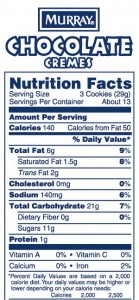We checked Jonathan’s blood sugar last night. He had asked us to. He prefers us to do this while he is asleep. There is no struggle and he does not ever remember it. It is something that John and I have been doing about every 6 months or so with him. Of our two children, he is the child that we worry the most about getting Type 1 Diabetes. The thin body frame. The mood swings when he goes more than 4 hours without eating. Lately it has been extreme exhaustion every night around 6 or 7 pm and a voracious appetite that has had us concerned.
Jonathan will be nine next week. He asks a lot about diabetes. He is always very concerned about John and what his blood sugars are doing. “What’s your blood sugar, Daddy?” he will ask each time he hears the click of the lancing device coming from the kitchen. He has stopped asking “Is that good?” when John tells him the readings as he now knows where John’s levels should be.
John and I had conversations before we decided to have children. We knew that our children would run the risk of developing diabetes. So, we checked the stats… an 8% chance if the father has Type 1 Diabetes and a 6% chance if the mother has Type 1 Diabetes. 8% is not bad. A 92% chance that they will not have diabetes sounds even better, we thought. Besides, if our children ever did ever develop Type 1, who better to have as parents than two Certified Diabetes Educators who have actually lived with diabetes for quite some time. And, although it is a chronic disease that will not ever go away, it is a disease that is controllable.
Still, in the back of our minds, the concern is always there. We hope that they never will develop diabetes. John has said that he would have an extremely difficult time, emotionally, if this were to ever happen.
Jonathan knows that we want to check his blood sugar when he starts the get thirsty, tired or has been acting up. So last night when he was falling asleep before dinner at 6 pm, he asked us to check his blood sugar while he was asleep that night.
So we did. 120 two hours and a half hours postprandial. That’s ok but I’d be more comfortable with a number lower than that. A fasting level over 126 or a random (any time of the day) level over 200 is the diagnostic criteria for diabetes. We will schedule his annual physical and stay on top of this.
~Angie


 I cannot describe the disappointment I felt when I picked up the latest edition of Diabetes Vital and saw a picture of a woman with a baby bottle in her hand next to the caption, “Gestational Diabetes”. Women who have had diabetes during pregnancy need to be encouraged to breastfeed their newborns! Diabetes Vital is a quarterly physician-to-patient magazine that is distributed to physicians’ and diabetes educators’ offices nationwide. Why didn’t they post a photo of a mother breastfeeding her newborn infant? Talk about missed opportunities!!!
I cannot describe the disappointment I felt when I picked up the latest edition of Diabetes Vital and saw a picture of a woman with a baby bottle in her hand next to the caption, “Gestational Diabetes”. Women who have had diabetes during pregnancy need to be encouraged to breastfeed their newborns! Diabetes Vital is a quarterly physician-to-patient magazine that is distributed to physicians’ and diabetes educators’ offices nationwide. Why didn’t they post a photo of a mother breastfeeding her newborn infant? Talk about missed opportunities!!!